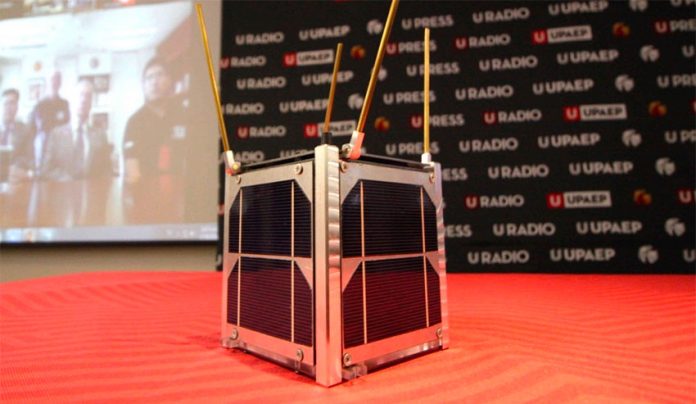NASA will launch the first all-Mexican nanosatellite into space on Wednesday from Cape Canaveral, Florida.
Designed and built by students at the Popular Autonomous University of Puebla (UPAEP), the AztechSat-1 will carry out a mission operated by Elon Musk’s company SpaceX.
Héctor Simón Vargas Martínez, a UPAEP academic who oversaw the satellite project, said the aim of the AztechSat-1 mission is to establish communication with the entire Globalstar satellite constellation system with a view to improving the transmission of data to earth.
Development of the miniature CubeSat satellite began in July 2017 and its design was approved by NASA late last year.
Andrés Martínez, an advanced exploration systems executive at the United States space agency, told a press conference in November 2018 that the quality of the design of the AztechSat-1 satellite, which measures just 10 cubic centimeters, was on a par with those of NASA engineers.
A total of 74 undergraduate and post-graduate students at UPAEP as well as 12 academics worked on the project.
Vargas recalled that there was also a Mexican project in the 1990s that aimed to send an experimental satellite into space but it didn’t get past the design stage.
“AztechSat-1 is the first national project . . . to go into space,” he said. “It has already obtained permission from the International Telecommunication Union.”
Carlos Duarte, coordinator of human capital training at the Mexican Space Agency (AEM), said the launch of the nanosatellite will set an important precedent and help lay the groundwork for Mexico to become a future leader in space research.
All of the information obtained by AztechSat-1 will be freely available so that students at other educational institutions can learn from its mission, he said.
Duarte said the total cost of developing and building the satellite and launching it into space is more than US $400,000.
About half of that amount came from the UPAEP and was used to purchase components for AztechSat-1 as well as pay for other development-related expenses while the AEM contributed US $100,000. NASA is covering the US $100,000 cost of launching the nanosatellite into space.
Vargas said another Mexican project to send a second satellite is already underway. The aim of a space mission by the AztechSat-2 satellite will be to monitor marine mammals and the oceans in which they live, he said.
Source: Reforma (sp)
